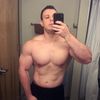Weightlifting 101: The Basics and Foundations for Starters
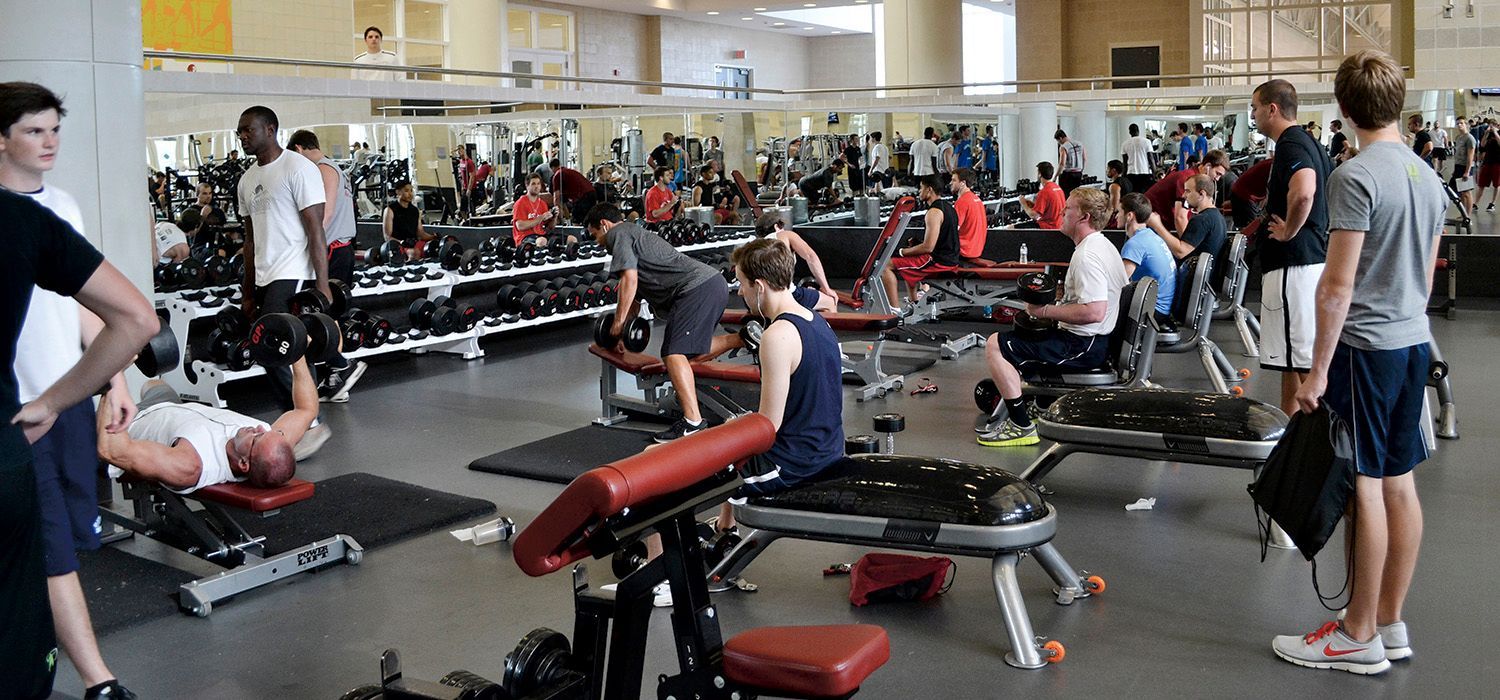
Preface
Welcome, my name’s Mike. I’ve technically been lifting for over 13 years, the most recent 5 being more consistent and constant. I started on the back porch of my house where my father taught me the basics on lifting with a home gym multi-machine, adjustable weight dumbbells, and a basic bench that he got for us (I was 10, the second oldest of 4 boys).
Over those 13 years, I scoured the internet to read up on as much bullshit as I could find about weightlifting. Forums, articles, more forums, etc. More recently I’ve more of my research based on scientific studies and nutritional science journals. I’ve been through a lot related to lifting whether it’s the social parts, experimenting with routines and exercises, my diet, and more. Lifting is intimidating to some folks or confusing. Some hire personal trainers to guide them on their magical quest. Some look up stuff on Google to find the “best” routine with 0 knowledge on how to execute it or if it’s even a good lift or a good lift for your goals.
This post is going to be long and maybe multi-part on JUST the starting basic stuff. Lifting is both incredibly easy and very complex to do. There is rights and wrongs and sometimes shit just doesn’t matter. I will break down the basics of lifting into simple sections to understand and go into details on those sections. I will go into some details of lifting that people don’t tell starters about to keep things simple, but bad habits die hard and the more correct you train the better and faster results will come and you’ll have no problems kicking up to the intermediate and advanced levels after your first year or two. Sometimes you will learn bullshit information. Sometimes we refer to this bullshit info as Broscience. Do not follow or trust Broscience. Actual scientists and college researchers in medicine or nutritional science do studies. The only okay Broscience is advice that comes from professional lifters and athletes, but not all that advice, even by pros, are actually good or accurate.
While I am a male, this is kind of written for a male audience since how I lift is typical for a male and not a female, nothing I say can’t be applied to females who want to start lifting.
The Social Aspect
Conquer Your Fear
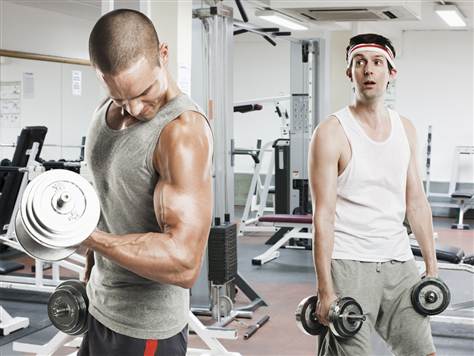
Major thing that prevents people from starting to lift or they already started and then they just stop, is the anxiety of going to the gym or weight room. Let me give some quick bullet points on this.
- Everyone at the gym is there to better themselves.
- Everyone at the gym used to be in your position and situation when they started.
- You see that huge ripped jock. Yeah, well before he started to lift he was small, skinny, or fat, or whatever.
- No one is born fit or muscular. You have to go to the gym to change that. Everyone at a gym did that and so can you.
- The gym “veterans” are self conscious about themselves too. I am a big guy and I lift a lot. I still have a minor feeling about other guys in my tier of lifting judging my movements or weight.
- People who mock others in the gym are douchebags you should ignore. Either they don’t remember when they started or they’re kind of mediocre at lifting. Or just a douche. But I have never seen someone every visibly or audibly mock someone at a gym in several years.
- Gyms get crowded. Don’t be afraid to ask someone:
- How many sets do you have left?
- Are you using this/these?
- Would you spot me?
When I was a kid just starting to lift, I did lifts on my home gym equipment on my back porch. I was self conscious about neighborhood kids seeing me lifting, especially as a kind of chubby 11 year old. Also I lifted on the porch at night. I would often try to hide myself on the wall or just pretend I wasn’t doing anything if I heard people walking up and down the sidewalk which could see into our porch. Looking back, my feelings about it were very dumb. I was not a very social 6th grader and self confidence was not a strong suit of mine. I believe the pressure of situation made me stop until I was 14.
So to put it all simply:
GO into the gym and do not give a fuck. Nobody at the gym gives a fuck. Everyone at the gym started once, they’re all there to do the same thing as you.
Etiquette
You can watch this funny video for some funny stuff here. Below I’m gonna go through DOs and DON’Ts
DOs
- If you aren’t sure if someone is using a weight or equipment, ask
- Only do bench or squats with a spotter
- Re-Rack your dumbbells
- Deload the weight plates on a machine or bar
- You can carry a backpack around the gym
- Ask someone to spot you
- Ask someone experienced for help or if you’re doing a lift correctly
- Put the weight plates in order, back to front, heaviest to lightest (45lb on the back, then 35, 35, 10, 5)
- Put weights ON a bar or machine in that same order (pic below)
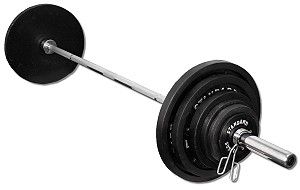
DON’Ts
- Do not do curls in the squat rack. Everyone will hate you, even people who don’t need to do squats.
- Don’t drink pre workout or protein shakes while exercising. Not how you take them and it’s better to have water or gatorade/powerade. You’ll look like a retard.
- Do not use multiple machines or weights (multiple dumbbells) at once. First off super sets are stupid. Second, you need to share stuff at the gym. If you’re hogging shit, people can’t get their stuff done.
- Do not yell or grunt obnoxiously. One thing when someone is doing a heavy ass deadlift or squat and does a semi loud one on the last sets. It is another for some guy to stand in a mirror grunting loud as fuck for some reason doing bicep curls.
- If your gym offers an easy way to wipe the equipment down (clean it), when you are done, wipe the shit off.
- Don’t sit with friends on a machine or 3 chatting. Nothing more annoying than the evening lift session at a local gym with like herds of highschoolers bullshiting around equipment doing almost nothing.
- Don’t try to lift more than you can. Don’t try to be impressive (and then fail).
- Quarter/half reps are not a thing. Don’t do them.
- Do not work out with a shirt. You see those images or videos of bodybuilders lifting without a shirt? Pro tip, they don’t actually do that while actually lifting.
- Try not to converse with people too long or offer no escape method. People have 1-2 minutes of rest between sets and exercises. They have to get back to lifting.
- Don’t ask people what their routine is. Not that you can’t or they’ll care, this rule is more of a “Stop focusing on the routine as being your problem”. Some people think “Oh if I just do what they’re doing in the gym, I’ll be like that”. FALSE
- Don’t play music over speakers, use headphones
- Don’t let your phone distract you too long between sets.
- Don’t step on the equipment cushion pads
- Do NOT SLAM THE DAMN WEIGHT. So many times I heard a crashing weight sound of some idiot who lets go of a machine or a cable. YOU WILL BREAK SOMETHING and no one wants to hear that either. Only okay to slam the weight if you’re in a squat rack and you set it down or you just deadlifted.
- Do NOT DROP THE WEIGHT. If you can’t put it down, don’t pick it up. The gym floors are concrete. You will break their concrete floors. Plus you look like a douche and an idiot. I lift with 70-115lb dumbbells. I have never dropped one. Only drop them if you really really have to.
- Being fully naked in the locker room is for weird old guys. I don’t know why this is common, but they exist and they love to weigh themselves naked.
Recovery
Before I get too ahead and start lifting shit for you to follow, you need to understand what you have to do when you aren’t lifting, which is like 95% of your day.
Let me ingrain this in you now. Recovery is the MOST important part about lifting.
If I just broke down a percentage of how important Recovery, Diet, and Lifting was to obtaining your lifting goal:
- Recovery – 50%
- Diet – 40%
- Lifting – 10%
In The Gym
So recovery starts in the gym literally in between sets. You need to give yourself 1-2 minutes to recover from the set you just did (3-5 minutes for strength and powerlifters). Your body will be re-supplying chemicals to your muscles between sets. Make sure to drink water between sets or exercises. It’s bullshit when a coach pushes you to do something with little or no rest in between. That’s not how your body improves. You need the right amount of rest periods between these intense intervals and you need water. This is how you improve.
Breathing
Everyone has to breath. When working out you need to breath even more. It’s typical for lifting to have a rhythm of breathing matching your movement. Breath in before performing the lift, breath out as you’re lifting / doing the rep, breath out on the “negative” (Negative is the opposite or returning motion after performing a lift or exercise). Some exceptions to these where the exercise on the negative pushes on the core/lungs and the lift expands or removes the pressure (EG: Leg Press, side lateral raises).
Important to not hold your breath. I’ve had to yell at a lot bunch of people in high school who wouldn’t breath sometimes while benching or squatting. You will pass out or you won’t perform well at all.
Out of the Gym
Eat
I can’t go into all the details on how you should eat. At least not in this part. Dieting is a major factor in all this. Diet will determine how well you progress, how much muscle you can gain, how much fat you lose, your health and wellness, and more.
Diet is different from person to person and from goal to goal. I suggest anyone who’s serious about their goals should count and keep track of the calories and macronutrients they are taking in each day. Macronutrients are Proteins, Carbohydrates, and Fats. You need a combination of all three of those each day. Do not fall for the myth that carbs make you fat, or that fats are bad. You need essential fats for cells and more and carbs for energy.
Your calorie needs will depend on your resting metabolism + the calories you burn from your physical activity. You can calculate your metabolism with online calculators for a rough estimate. Lifting sessions are harder to judge, they can range from 300-400 calories in a session. Counting calories will be most important to lose fat and stay low on fat.
Having excess calories will not make your muscular gains better at all. You can make the same gains on a calorie deficient as you would on eating a ton of stuff.
Do not be fooled by the ideas of bulking and cutting cycles. There is very little reason for most people to do these.
And Sleep
Your recovery mainly happens during REM sleep (Rapid Eye Movement sleep). As you’re sleeping, your body will be busy recovering and replenishing. For males, this is also the peak time of your body’s testosterone production.
I can not stress how important it is to get 2 full REM cycles of sleep every day. I say 2 cycles instead of 8 hours because not everyone sleeps a straight 8 hours. Some people experience 2 cycles of 4 hours REM cycles with a waking disruption in between.
Having a Goal
(And also your own personal drive and motivation to achieve that goal)
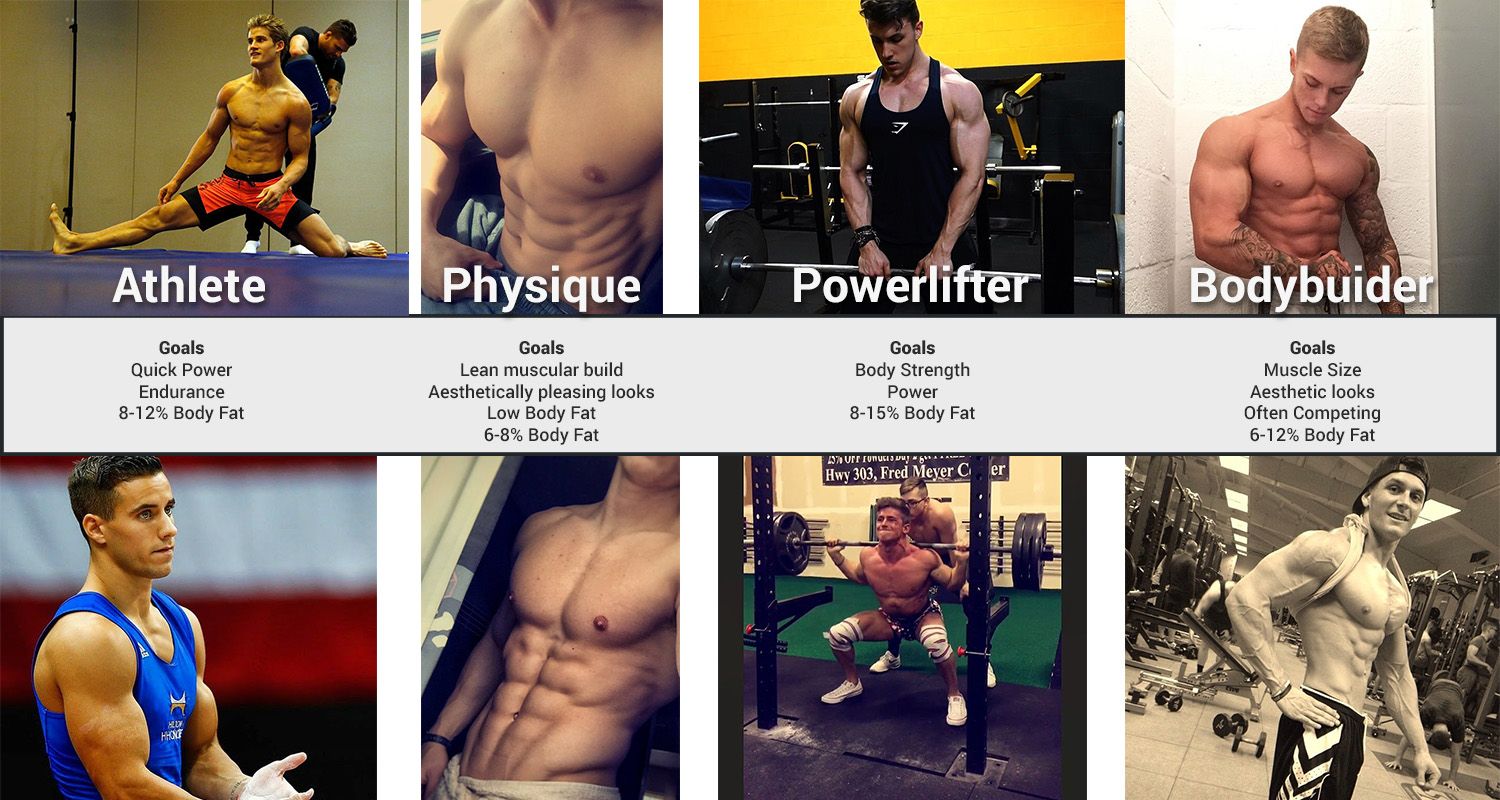
So I made this chart to show some good example body types with some simplified lifting goals. You want to lift right? What’s your motivation to lift and what are you trying to achieve? Don’t tell me “Weight Loss or gaining weight”. No, that’s an effect of lifting. When you get into lifting, you’re going for a goal physically. In that goal path, you doing sub-goals to help you achieve the your ultimate end goal. The chart above doesn’t mean you’re 100% clean cut into categories. There is a ton of overlap, overlapping goals, etc. Find a goal you want, use that as your motivation, and move on that goal. Your goal will be affected by your routine. While routine isn’t the majority of a lifting lifestyle, it will affect the kind of results you want. I’ll go into specific routines for some goals later on in this post.
Bodybuilder
A bodybuilder mainly cares about the size of their muscle. Whatever helps them achieve that, they’ll do it. While they prefer low bodyfat, some do cycles of bulking and cutting to maximize their muscle size gains when their appearance doesn’t matter. They typically spend the longest in the gym and go the most often during the week. A typical bodybuilder does not care about how much weight they are moving and many do not care about performing long endurance running.
A bodybuilder’s best friends in the gym are dumbbells, cables, and smith machines. They make up a majority of the lifts because of their isolation of the muscle groups.
Physique
Not that much different from a bodybuilder. They aim for a combination of athletic endurance performance and muscle size. They prefer to keep a very low body fat year long and once they reach a size they like, they try to maintain that size or look. Often athletes achieve this goal through typical lifting and active lifestyles.
You’ll want a mixture of compound and isolation exercises as well as bodyweight lifts.
Athlete
This person cares about performing 120% in a competition. Wrestlers, fighters, gymnasts, lacrosse players, etc. They want quick movement AND explosive power in one go. They keep up high endurance levels through constant cardio. They want to stay lean, but they aren’t looking to be too lean. A little body fat is desirable for athlete wanting to have consistent energy in a competition.
Compound lifts are key for strength. Athletes should do a lot of bodyweight exercises and core movement. Full body workouts work well here.
Powerlifter
One of the more unique ones and more simple to understand, powerlifters are anyone who is concerned about how much weight they move and their explosive energy. They lift very heavy and focus on compound exercises that work multiple muscle groups. Powerlifting is great for newer people because it gives a great understanding of the mind-muscle connection and focusing on how to do 100% on each set.
Compound lifts are king. Bench, Squat, Deadlift, etc. In my opinion a powerlifter should aim to increase the weight they can lift by at least 5 lbs per week. Full body workouts are best done here.
So did you pick a goal? You don’t have to spend a lot of time thinking about it. These goals are long term and take a very long time. You won’t accidently become a bodybuilder or powerlifter overnight, or even in a month. But by picking what you want to work towards will help you get a leg up on getting there and having the knowledge to move to the next level in lifting for that goal.
I’m gonna end this post here. I’m going to write posts on what to do about how to reach each goal, starting with the Bodybuilder and Physique goal(s), as this is something I have the most experience in. Below is a chart to keep in mind for if you’re impatient to start a routine now. I’ll be using this chart over and over again.
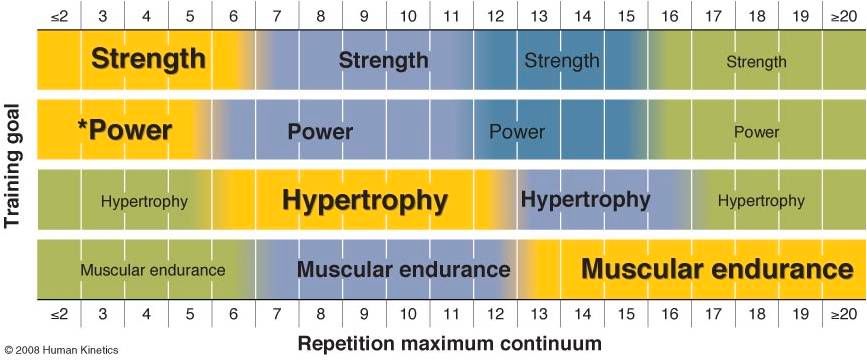
I also recommend you check out my myths and misconceptions post. Some quick knowledge things to get out of the way and not be a retarded lifter at the gym.
